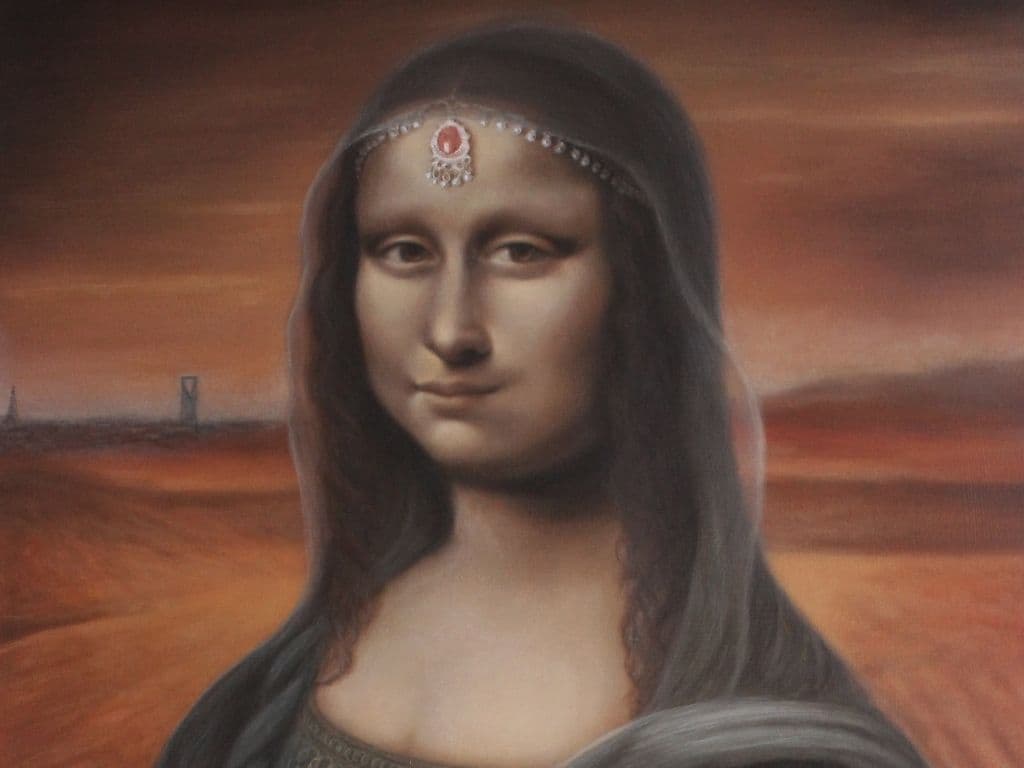When one thinks of Leonardo Da Vinci’s religious works, several brilliant works of art immediately come to mind. The intense devoutness of the ceiling at Sala delle Asse and the tragedy in the Last Supper are absolutely breathtaking. Some people would include the Mona Lisa on this list, some would not.
Is Mona Lisa Religious? There is no definitive answer to the question of whether the Mona Lisa is religious. While some art historians attach a religious significance to the Mona Lisa, others believe its focus on wealth was much more relevant to its themes. There’s little in Da Vinci’s life to suggest that he was deeply religious.

We know who the Mona Lisa was now, but that does not offer much further evidence in either direction. In this blog, we’ll go over the various interpretations of the Mona Lisa as well as talk a little about its history in hopes of providing some satisfying conclusion.
Is Mona Lisa Religious?
Obviously, the question, “Is Mona Lisa religious?” is somewhat of a loaded one. Art is always open to interpretation, so unless the artist speaks publicly about his intentions (and they often intentionally remain silent), it’s forever a mystery.
We know that Mona Lisa was in fact Lisa Gherardini, wife of Francesco de Giaconda, a wealthy silk merchant. It was a private portrait commissioned to celebrate their new home and the birth of their second son, Andrea.
We also know that Da Vinci had no means of financial support at the time he took the job, so it’s understandable that he may not have been enthusiastic about the assignment.
It’s worth noting that early renaissance art was notable for its religious themes. The term itself means “rebirth” and with rebirth often comes a rediscovery of where we originated.
Works such as Michaelago’s Sistine Chapel and Da Vinci’s own The Last Supper perfectly reflect that which was popular from the 1300-1500s.
Mona Lisa was a departure from that tradition. It featured a modern woman in modern attire. There are other aspects of the image that render it more secular than religious.
Moreover, the painting is largely considered a masterpiece because of its natural realism, not its supernatural or God-like imagery.
Why Do Some Think The Mona Lisa Is Religious?
It’s largely believed, at least in the art world, that the painting reflects a more secular world. However, thanks to fictions like Dan Brown’s The Da Vinci Code and other popular theories, the internet is overrun with people attempting to link it to more religious works.
One argument claims that, because Da Vinci had three versions of the painting while he worked on it for a decade and he allegedly said it brought him peace, that he had constructed an image of God; The Holy Trinity existed within those three paintings.
There are countless other theories related to the Mona Lisa’s true meaning, but it’s doubtful any truth will come from Dan Brown.
Though it can be understood why someone could view the Mona Lisa as religious. It’s a ponderous image, one that doesn’t give easy answers. In fact, only 19 years ago, critics began to openly dismiss the work.
Da Vinci biographer Charles Nicholl said in 2002 that the painting had become a repository for all ideas both grand and small, rendering it somewhat meaningless. Interestingly, this was shortly before we found out who she was, opening up a new kind of mystery.
Another, Secular Meaning
In truth, the painting’s true themes may be much more simplistic than what people have given to it. The name of the painting, found once in some notes to his assistant, was “La Gioconda”. This is somewhat of a playful name.
The word, in Italian, literally translates to jovial or happy. It is also the feminine version of the subject’s last name, who sits smirking at us as we try to interpret what they’re communicating.
This is certainly true at least in visual representation. Take note of the middle distance that puts the subject in perfect line with the viewer, and the bright colors and long, winding road that appears behind her. If that’s not enough, there’s of course the smile – what might it know?
The truth is we’ll never know, nor should we. Art is open to interpretation, and as such if one wanted to ascribe religious themes to a work where there may not have intentionally been any, they are entitled to do so.